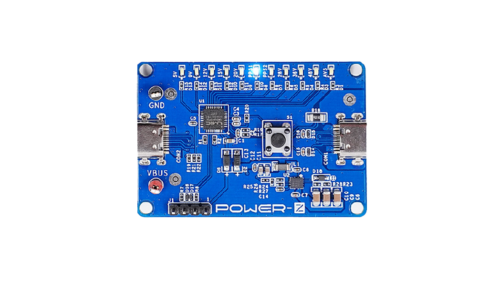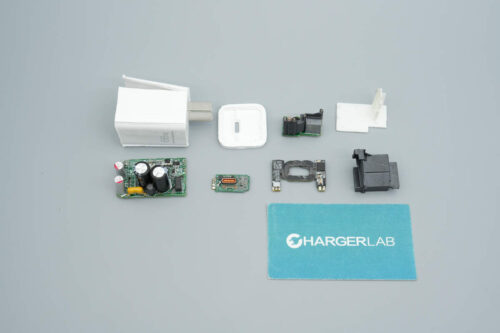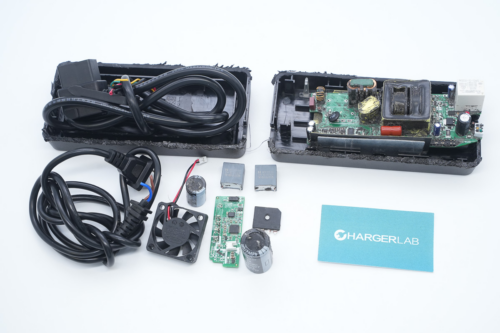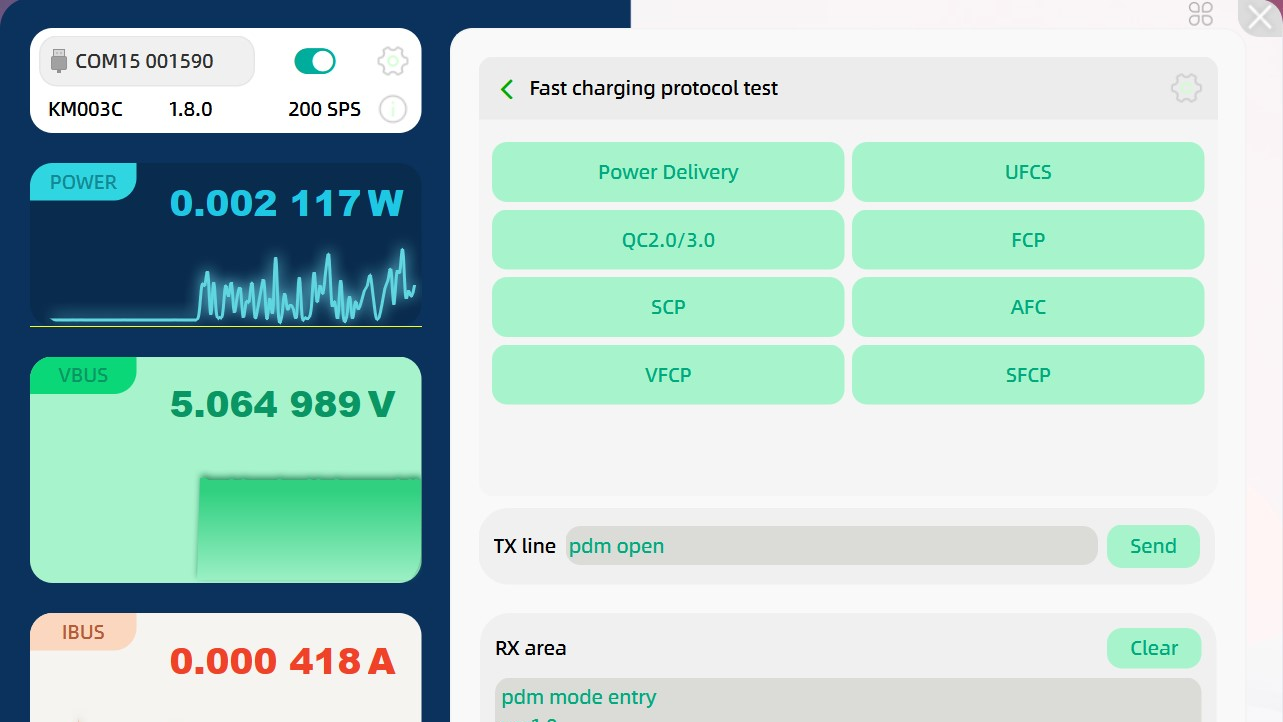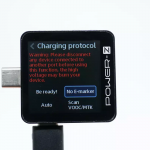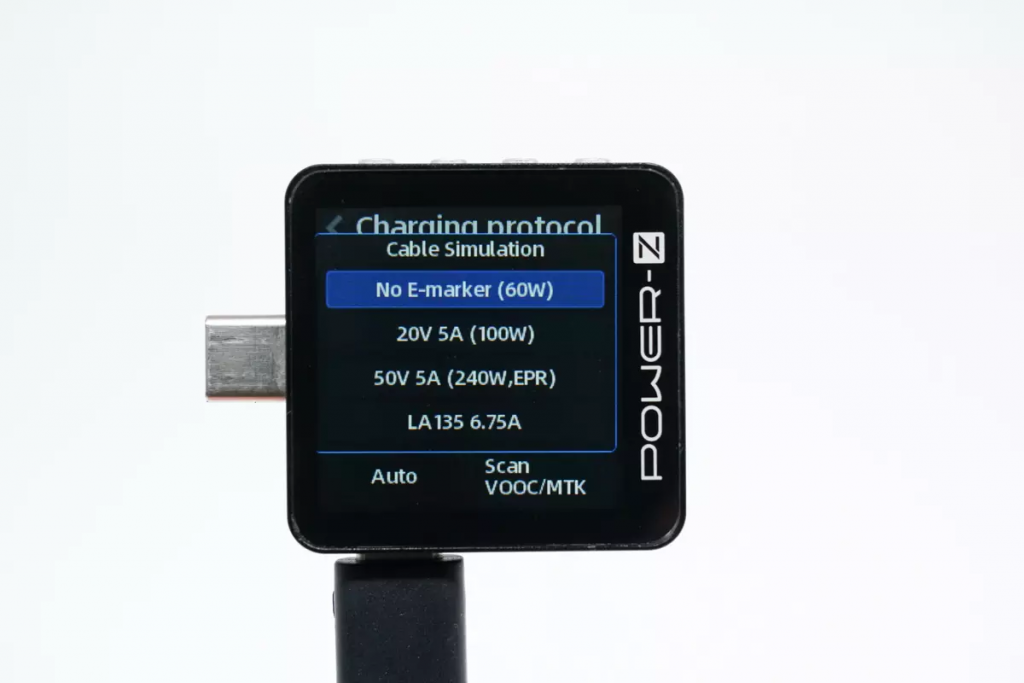Introduction
Since the release of the USB PD3.1 protocol, several 140W GaN chargers have entered the market, and demand for PD3.1 continues to grow rapidly.
To meet this demand, ChargerLAB has launched a brand new product - ChargerLAB Power-Z SINK240 USB PD3.1 Trigger Board. It supports full-range PD3.1 triggering (up to 240W, 48V). Designed as a streamlined testing tool for large-scale factory development, it supports both SPR and EPR mode PD packets, with a maximum voltage tolerance of 60V. It can trigger up to 48V EPR profiles and supports 5V, 15V, 20V, 28V, 36V, 48V, as well as PPS, while also featuring indicator LEDs. This makes it suitable for most USB PD fast charging product development and testing requirements today.
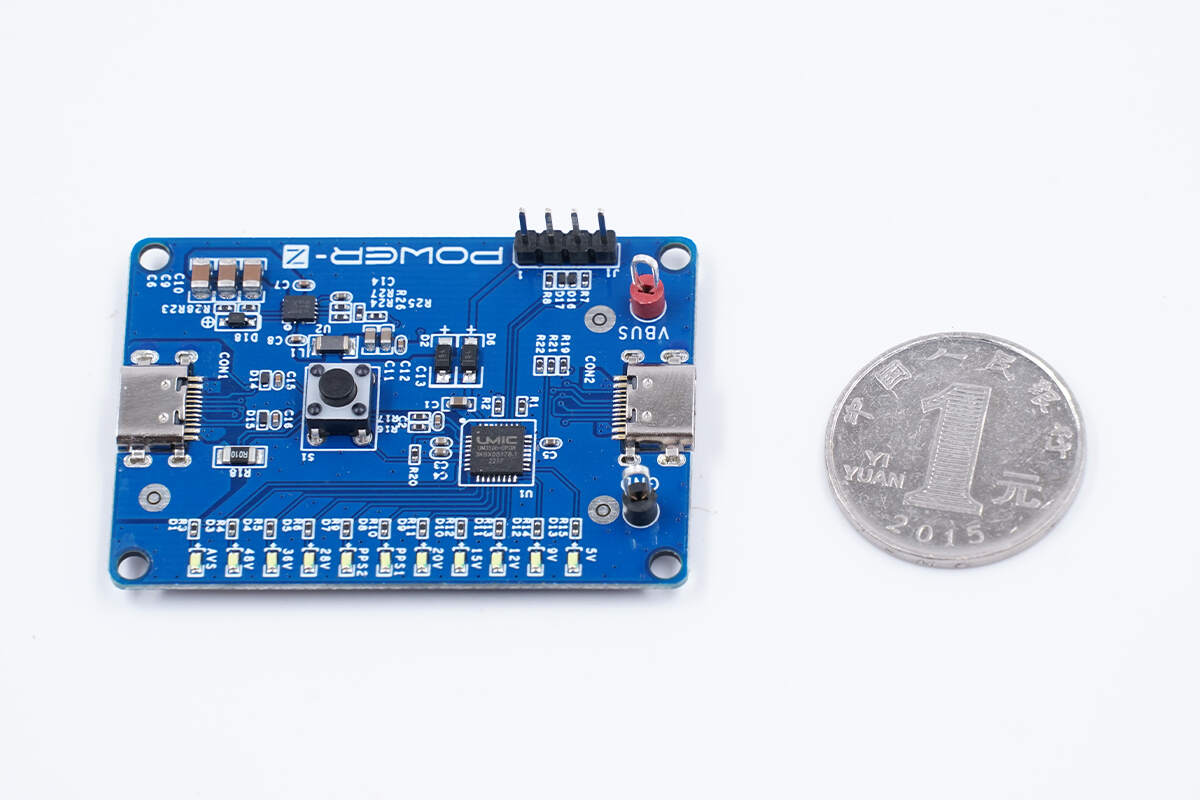
The new SINK240 trigger board adopts an ultra-compact design, with the PCB measuring only 54mm × 38mm. Components on the board are kept minimal, with the core controller being the UM3506 chip from Unicmicro, the industry’s first to support full-range USB PD3.1 triggering as well as PPS.
On the front side, there are 11 LED indicators that represent the requested voltage profiles (FIXED, PPS, and EPR). A single button is provided for manual PDO switching, allowing PD power sources to output the desired voltage. Both input and output use Type-C connectors, with additional positive/negative terminals on the output side for easy load connection during testing.
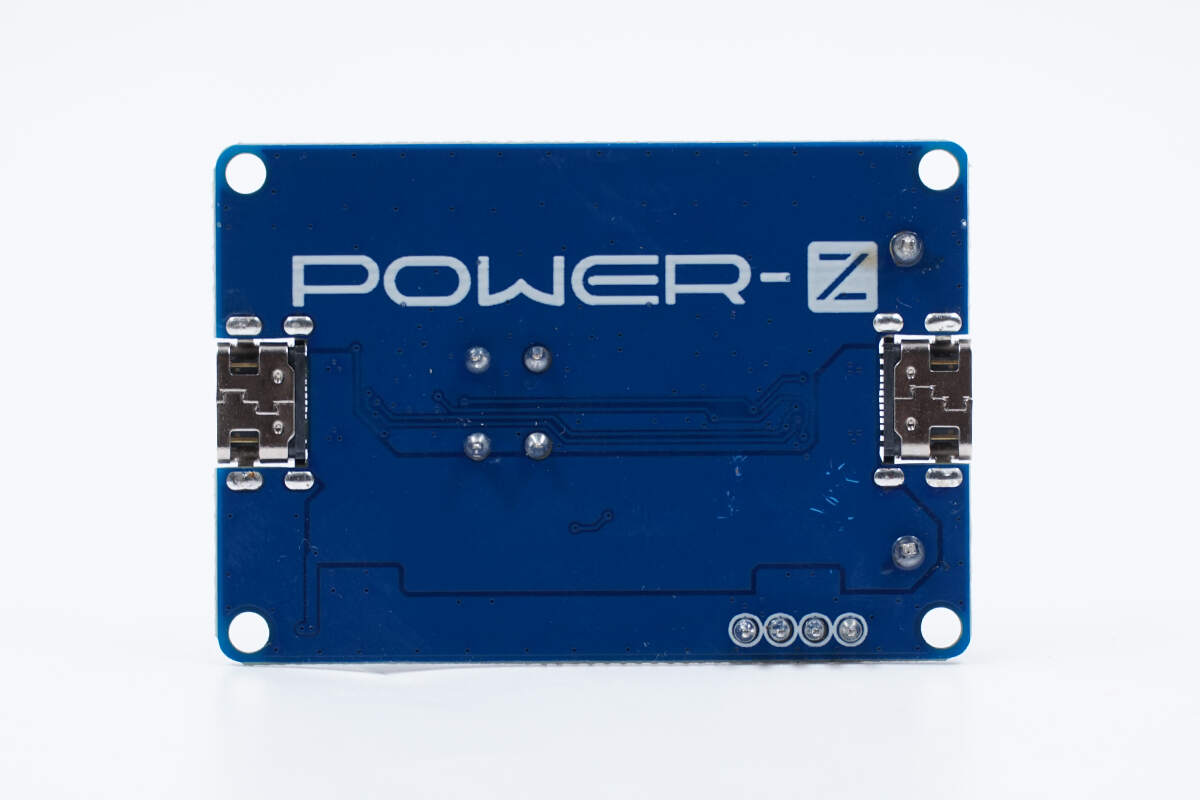
The PCB is single-sided, with no components on the back, which simply carries the POWER-Z logo.
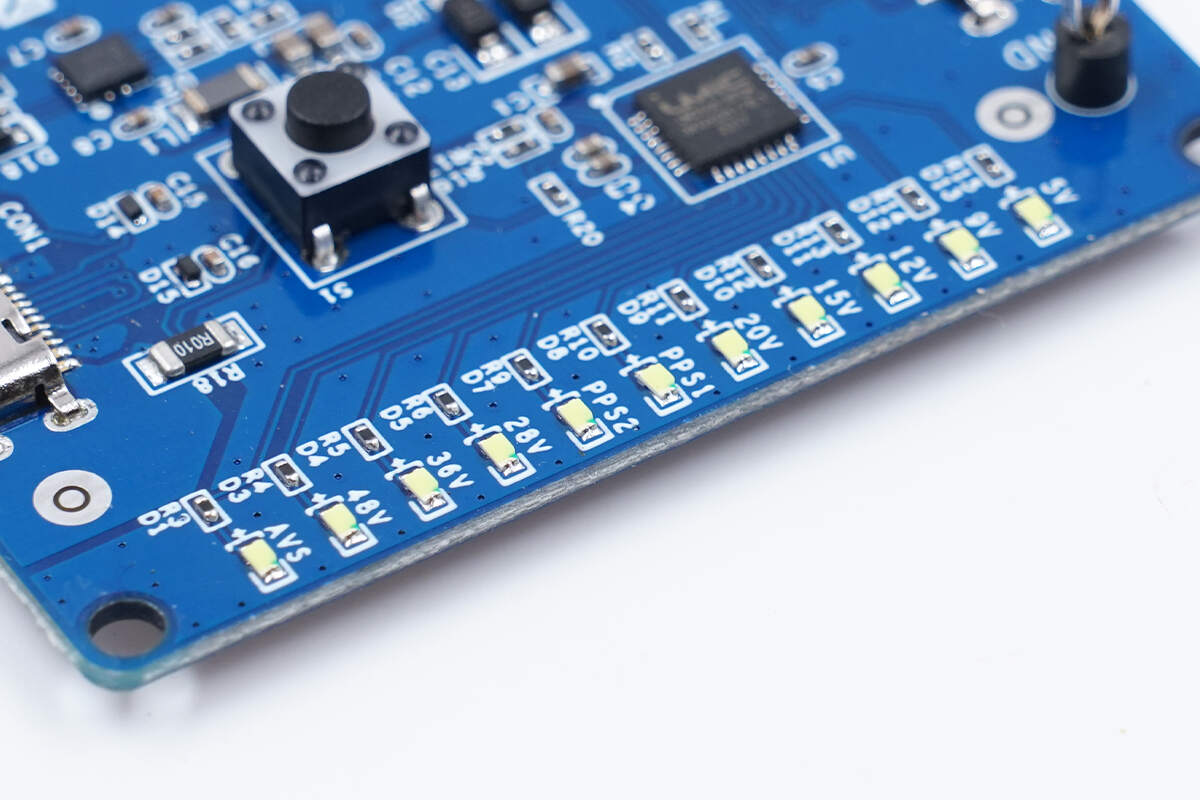
The 11 LED indicators correspond to 8 different PDO levels plus 2 PPS modes and 1 AVS mode (unusable at the moment), with clear labeling for convenience. The table below describes the LED definitions:
| # | Name | Description |
| 1 | 5V | Negotiation completed, voltage = 5V, LED #1 stays on |
| 2 | 9V | Negotiation completed, voltage = 9V, LED #2 stays on |
| 3 | 12V | Negotiation completed, voltage = 12V, LED #3 stays on |
| 4 | 15V | Negotiation completed, voltage = 15V, LED #4 stays on |
| 5 | 20V | Negotiation completed, voltage = 20V, LED #5 stays on |
| 6 | PPS1 | Entered PPS mode, LED #6 keeps flashing |
| 7 | PPS2 | Entered PPS mode, LED #7 keeps flashing |
| 8 | EPR 28V | EPR mode, voltage = 28V, LED #8 stays on |
| 9 | EPR 36V | EPR mode, voltage = 36V, LED #9 stays on |
| 10 | EPR 48V | EPR mode, voltage = 48V, LED #10 stays on |
In a word, when the trigger board requests a specific profile (PDO/EPR, if supported), the corresponding LED will light up steadily. For PPS modes, the corresponding LED will keep flashing.
PPS Voltage Profiles:
| PPS Range | Initial Voltage | End Voltage | Step (configurable) |
| 3.3–5.9V | 5V | 5.2V | 200mV |
| 3.3–11V | 5V | 9V | 400mV |
| 3.3–16V | 5V | 15V | 1000mV |
| 3.3–21V | 5V | 20V | 1500mV |
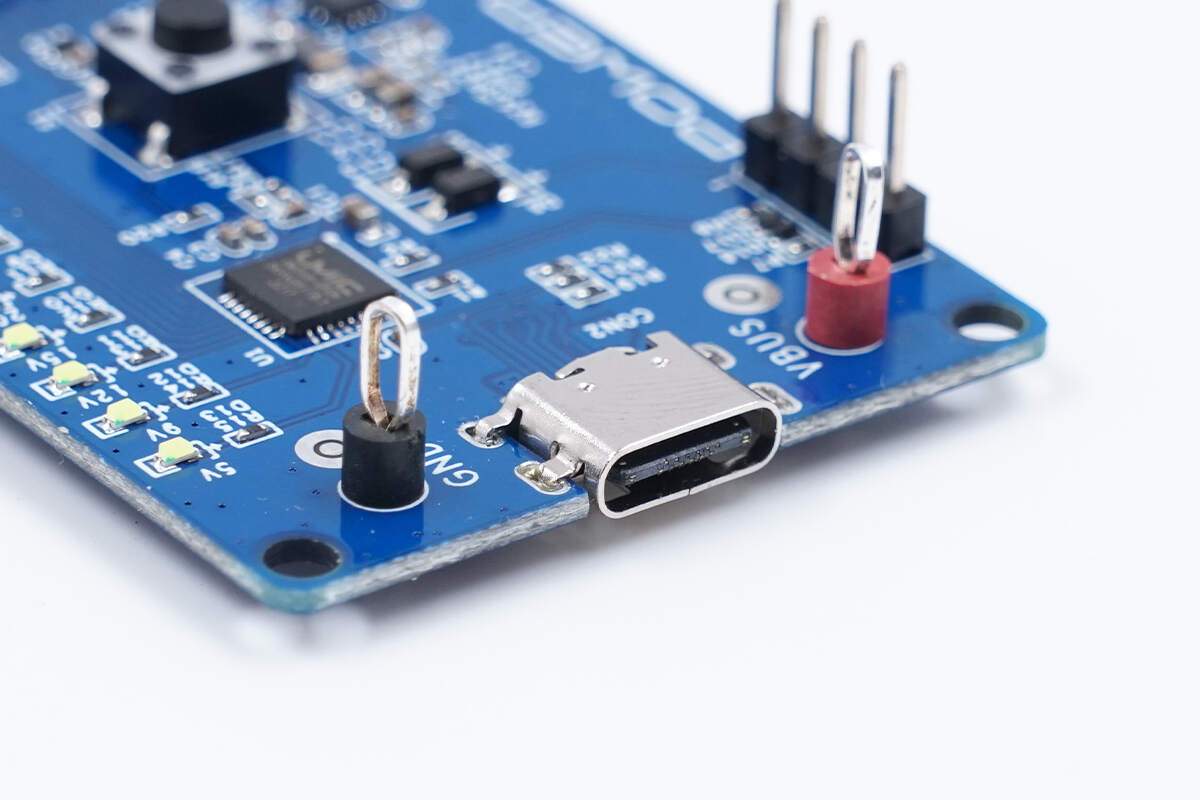
Close-up shots show the output side with Type-C port and positive/negative terminals.
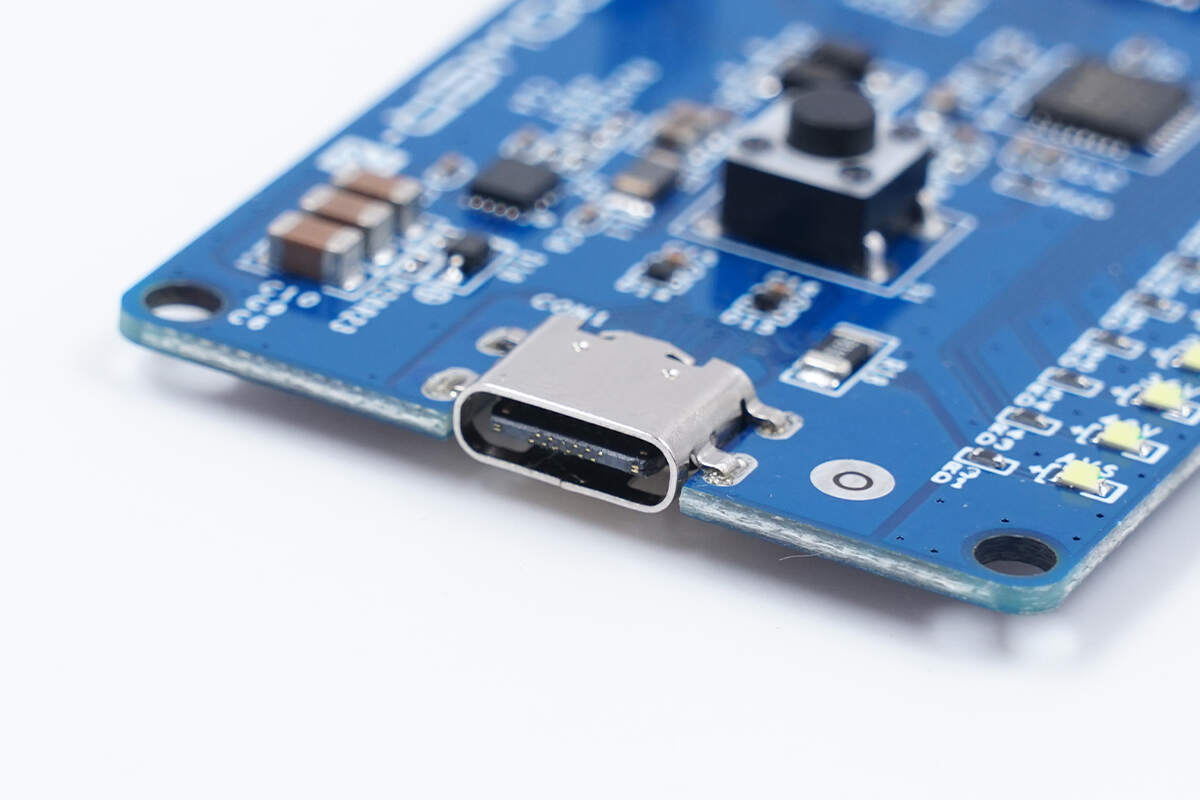
Input Type-C port.

And the adjustment button.

The UM3506 from Unicmicro is a PD3.1 DRP bidirectional fast-charging controller. It fully supports PD3.1 SRC, SNK, and DRP roles, including PPS in SPR mode, as well as PD3.1 E-Marker cables.

When connected to Apple’s 140W charger, which supports five PDOs of 5V/3A, 9V/3A, 15V/3A, 20V/5A, and 28V/5A, the SINK240 will first request the initial PDO (5V), at which point LED #1 lights up.

Pressing the button makes the SINK240 poll the next PDO, where LED #2 lights up steadily at 9V, confirming the charger supports the 9V profile.

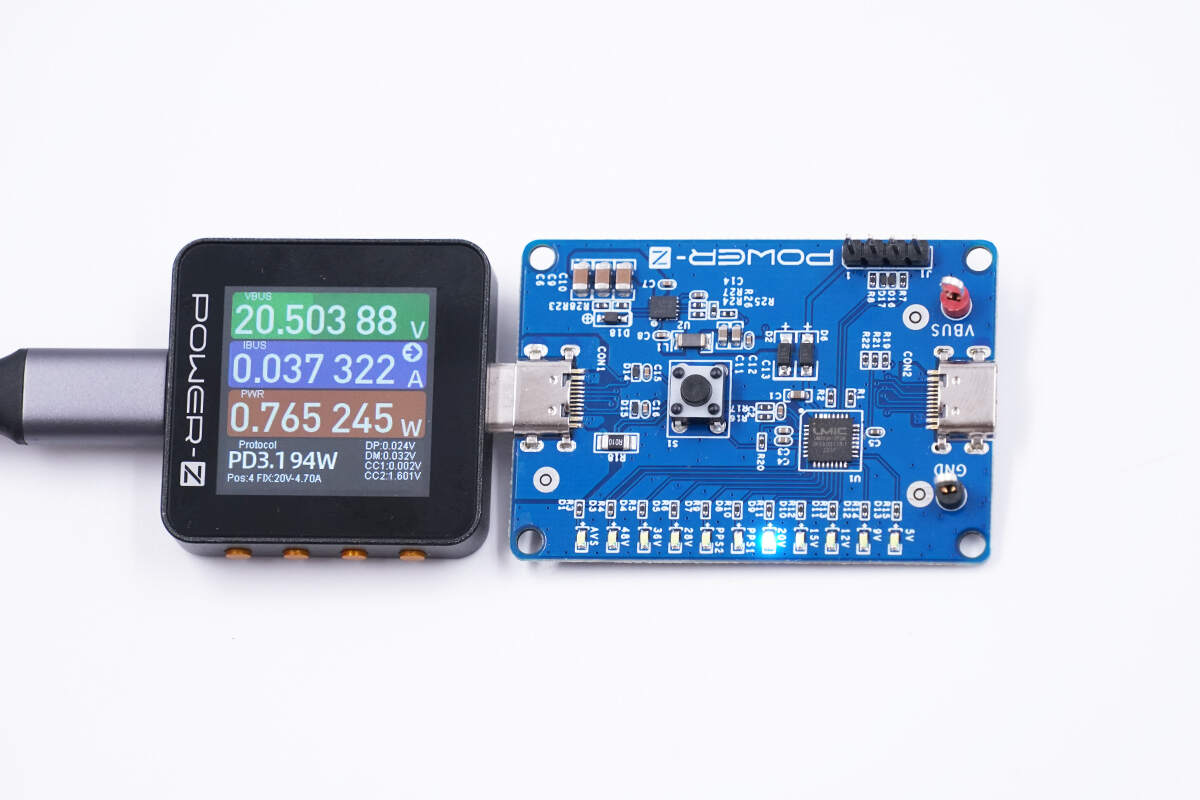
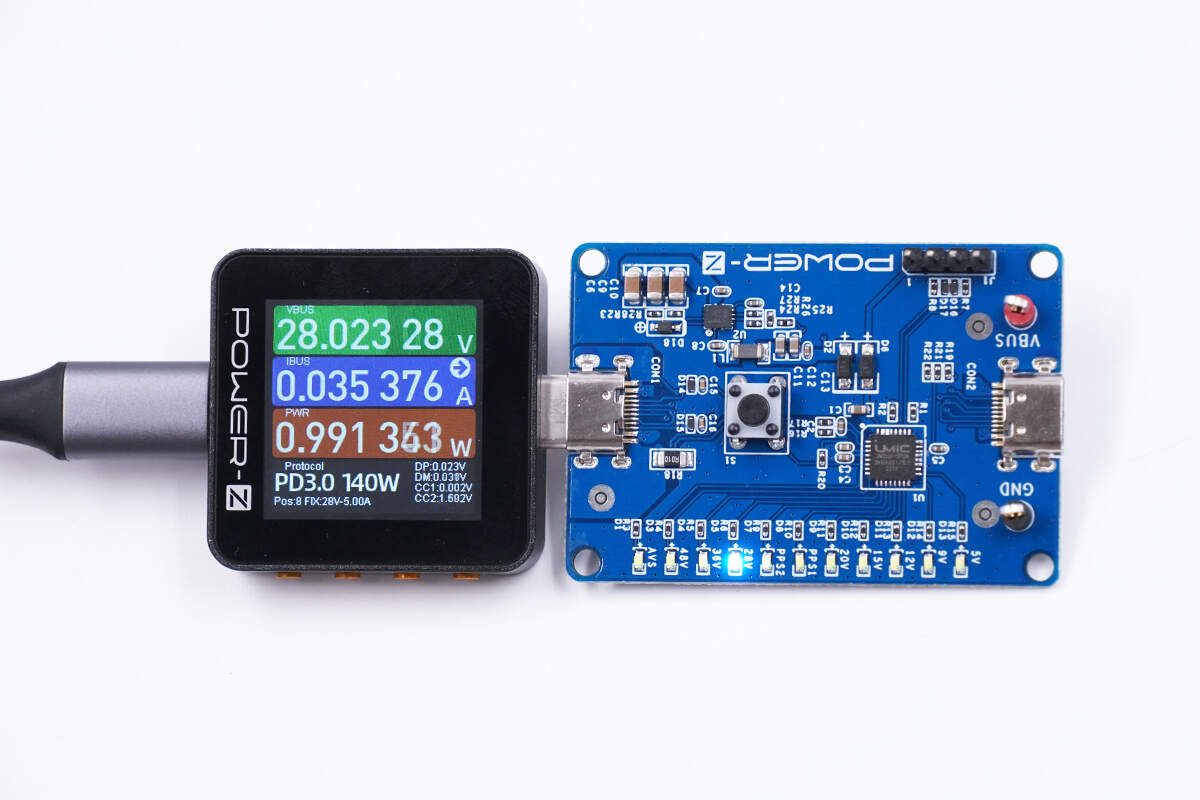
Similarly, pressing the button further lights up LEDs corresponding to 15V, 20V, and 28V.
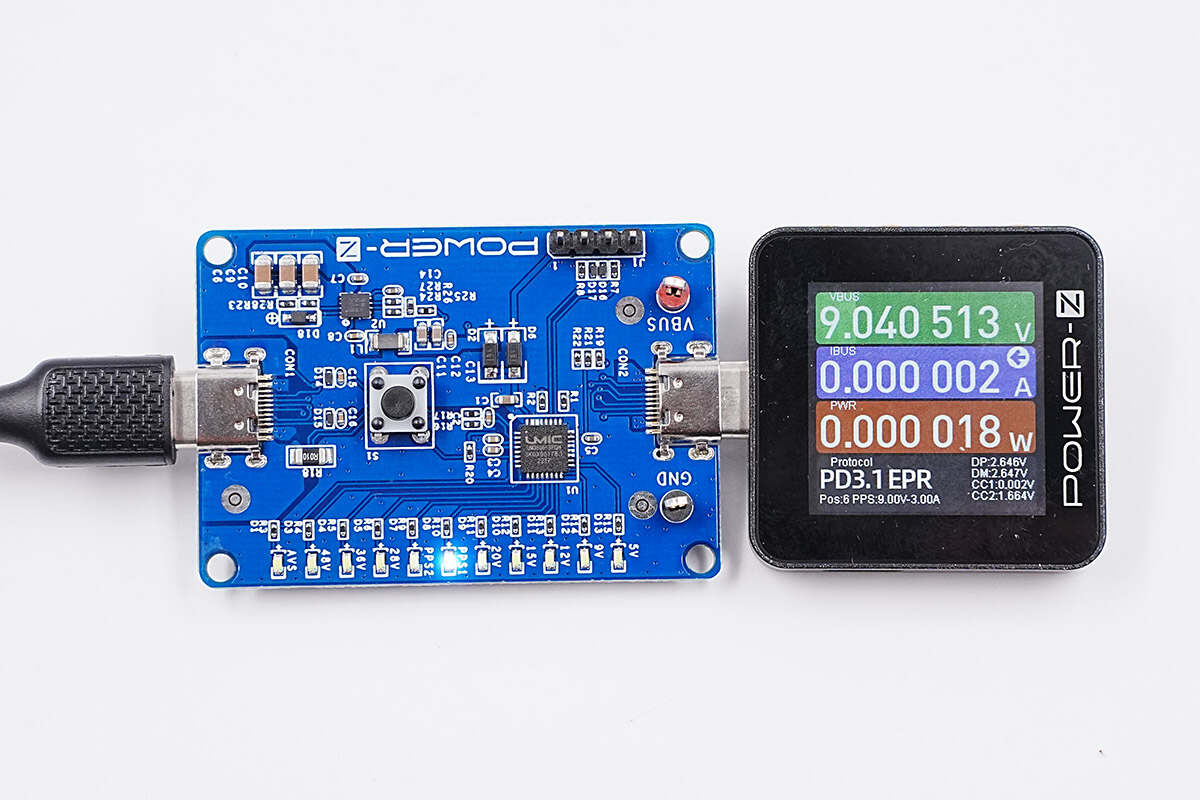
When the SINK240 requests the first PPS profile, it starts at 5V as the initial voltage for polling within the 3.3–11V/3A range. The voltage then increases in 400mV steps until it reaches the final voltage of 9V. After that, the SINK240 continuously sends 9V power requests to the PPS device. Meanwhile, LED #6 flashes continuously to indicate the PPS mode.
When the SINK240 requests the second PPS profile, it also starts at 5V as the initial voltage for polling within the 3.3–16V/3A range. The voltage then increases in 1000mV steps until it reaches the final voltage of 15V. After that, the SINK240 continuously sends 15V power requests to the PPS device. At the same time, LED #7 flashes continuously to show PPS operation.
Summary of ChargerLAB
Since Apple first applied PD3.1 to the 16-inch MacBook Pro, the market has been eager for PD3.1 fast charging solutions. For chipset vendors, solution providers, and manufacturers alike, developing PD3.1 products remains a major challenge. The ChargerLAB POWER-Z SINK240 USB PD3.1 PPS Trigger Board arrives as an essential tool to accelerate industry progress.
The ChargerLAB POWER-Z SINK240 USB PD3.1 Trigger Board is now officially available on Amazon US. Click the button at the beginning or end of this article to purchase.
Related Articles:
1. Inventory of 10 Commonly Used Functions of Power-Z KM003C
2. Protocol Trigger Module on PC | The New Update of POWER-Z KM003C/2C
3. An Ultimate PD3.1 Product Buying Guide: Chargers, Cables, Chips, and More

